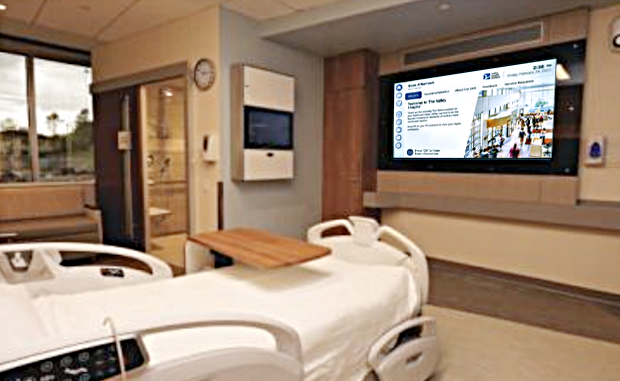

4 Ways New High-Tech Valley Health Facility Will Redefine Patient Experience

If all goes as planned, Valley Health will tackle a huge challenge in April that it has been anticipating for some time. In a single day, all patients from its Ridgewood, New Jersey, hospital will be moved to the new high-tech Valley Hospital in Paramus.
Like the move itself, the new facility has been planned with painstaking detail to deliver a high-tech, high-touch experience for patients, their families and caregivers. It’s all part of an initiative called “Transforming Tomorrow.”
The new hospital incorporates innovative, cutting-edge technology, operational features and lessons learned about patient care during the pandemic.
4 Patient Experience-Defining Changes on the Way
1 | Streamlined Brain Surgery ORs
The patient- and family-friendly design includes two state-of-the-art neurosurgical operating rooms connected to an intraoperative MRI room.
“The setup will allow brain surgeons to perform surgery and then, with the patient still asleep, the MRI allows us to make sure the entire tumor has been removed safely and completely. If a residual portion of a brain tumor is identified on the scans, we can seamlessly bring the patient back to our surgical suite and remove any remaining disease,” explains Anthony D’Ambrosio, M.D., director of neurosurgery, in a report about the new hospital.
2 | Safer Room Designs
Acting on a lesson learned from COVID-19, each patient room and all exam rooms in the emergency department can be converted to negative-pressure rooms, and gas and electrical outlets can operate at critical care standards. Maintenance-free, self-sealing storage compartments embedded in the wall between the patient room and hall will allow intravenous pumps to be accessed and stocked without disturbing patients. An augmented artificial intelligence system will help prevent patient falls.
3 | Patient-Facing Tech Engagement
A 75-inch footwall monitor is a central focal point for the patient experience. It will display clinical information, educational content, care details and entertainment options, while allowing physicians to share diagnostic images.
The monitors will display personal information for each patient, announce staffers’ names as they enter (thanks to a real-time locating system activated by staff badges), offer menus and show healing visuals, results of lab tests, X-rays, MRI and CT scans, helpful exercises and more.
Patients will operate controls at their bedside, where they also will find an iPad-like tablet. The Hello app allows for secure videoconferencing with doctors, including when they make their rounds and the patients’ families aren’t present.
4 | A Better Night’s Sleep for Patients
Two-sided nurse servers in patient rooms will offer hallway access to make supplies, medications and soiled linen zones accessible via a proximity card. This will minimize disruptions to patient sleep cycles and privacy.



